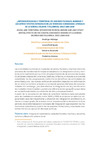Identificador persistente para citar o vincular este elemento:
https://accedacris.ulpgc.es/jspui/handle/10553/108165
| Campo DC | Valor | idioma |
|---|---|---|
| dc.contributor.author | Hidalgo, Rodrigo | en_US |
| dc.contributor.author | Rodríguez, Laura | en_US |
| dc.contributor.author | Alvarado, Voltaire | en_US |
| dc.contributor.author | Arenas, Federico | en_US |
| dc.date.accessioned | 2021-07-02T15:02:30Z | - |
| dc.date.available | 2021-07-02T15:02:30Z | - |
| dc.date.issued | 2021 | en_US |
| dc.identifier.isbn | 978-84-9042-400-1 | en_US |
| dc.identifier.uri | https://accedacris.ulpgc.es/handle/10553/108165 | - |
| dc.description.abstract | Las actividades turísticas en ciudades lacustres, fluviales y marinas silencian procesos de transformación espacial basados en la integración social y territorial, principalmente por su rol en el sostenimiento de las economías locales. En las áreas urbanas de La Serena, Valdivia y Villarrica, el impulso a la vivienda subsidiada ha ido progresando conforme se densifican las actividades de amenidad y ocio. Las nuevas políticas de subsidios impactan en la formación de un entorno turístico próspero a la vista de quienes disfrutan de sus amenidades. Sin embargo, ¿ha sido efectiva la integración social y territorial en las ciudades mencionadas?, ¿existe una diferenciación geográfica que deba ser reclasificada desde su condición de sitio y emplazamiento? A partir de la recopilación de datos de subsidios habitacionales ejecutados para las ciudades en estudio, entre 2000 y 2018, se propone un ejercicio singularizado para las trayectorias y situación de integración acontecería, en menor o mayor grado, de la mano con el impulso turístico durante el mismo periodo. Se problematizará el concepto de integración que exponen los instrumentos subsidiarios, a partir de las posibles limitaciones y resultados existentes frente a la ejecución de estas políticas. | en_US |
| dc.description.abstract | Tourism activities in lake, river and marine cities silence spatial transformation processes based on social and territorial integration, mainly due to their role in sustaining local economies. In the urban areas of La Serena, Valdivia and Villarrica, the drive for subsidized housing has been progressing as amenity and leisure activities have become denser. The new subsidy policies impact on the formation of a prosperous tourist environment in full view of those who enjoy its amenities. However, has social and territorial integration been effective in the aforementioned cities? Is there a geographical differentiation that must be reclassified from its status as site and location?. Based on the collection of data on housing subsidies executed for the cities under study, between 2000 and 2018, a singular exercise is proposed for the trajectories and integration situation that would occur, to a lesser or greater degree, hand in hand with the tourist impulse during the same period. The concept of integration that the subsidiary instruments expose will be problematized, based on the possible limitations and existing results in the face of the execution of these policies. | en_US |
| dc.language | spa | en_US |
| dc.publisher | Servicio de Publicaciones y Difusión Científica de la Universidad de Las Palmas de Gran Canaria (ULPGC) | en_US |
| dc.source | La reconfiguración capitalista de los espacios urbanos: transformaciones y desigualdades / Juan Manuel Parreño Castellano y Claudio Jesús Moreno Medina (Coords.), p. 339-351 | en_US |
| dc.subject | 531290 Economía sectorial: turismo | en_US |
| dc.subject.other | Integración subsidiaria | en_US |
| dc.subject.other | Ciudades fluviales | en_US |
| dc.subject.other | Marinas y lacustres | en_US |
| dc.subject.other | Turismo y desarrollo urbano local | en_US |
| dc.subject.other | Subsidiary integration | en_US |
| dc.subject.other | River | en_US |
| dc.subject.other | Marine and lake cities | en_US |
| dc.subject.other | Tourism and local urban development | en_US |
| dc.title | ¿Integración social y territorial en ciudades fluviales, marinas y lacustres? Efectos espaciales en las viviendas subsidiadas litorales de la Serena, Valdivia y Villarrica, Chile (2000-2018) | en_US |
| dc.title.alternative | Social and territorial integration in river, marine and lake cities? Spatial effects on the coastal subsidized housing of la Serena, Valdivia and Villarrica, Chile (2000-2018) | en_US |
| dc.type | info:eu-repo/semantics/bookPart | en_US |
| dc.type | BookPart | en_US |
| dc.relation.conference | XV Coloquio de Geografía Urbana | - |
| dc.description.lastpage | 351 | en_US |
| dc.description.firstpage | 339 | en_US |
| dc.investigacion | Artes y Humanidades | en_US |
| dc.type2 | Capítulo de libro | en_US |
| dc.utils.revision | Sí | en_US |
| dc.identifier.ulpgc | Sí | en_US |
| dc.identifier.ulpgc | Sí | en_US |
| dc.identifier.ulpgc | Sí | en_US |
| dc.identifier.ulpgc | Sí | en_US |
| dc.contributor.buulpgc | BU-HUM | en_US |
| dc.contributor.buulpgc | BU-HUM | en_US |
| dc.contributor.buulpgc | BU-HUM | en_US |
| dc.contributor.buulpgc | BU-HUM | en_US |
| item.grantfulltext | open | - |
| item.fulltext | Con texto completo | - |
| crisitem.event.eventsstartdate | 19-10-2020 | - |
| crisitem.event.eventsenddate | 20-10-2020 | - |
| Colección: | Capítulo de libro | |
Visitas
172
actualizado el 11-may-2024
Descargas
157
actualizado el 11-may-2024
Google ScholarTM
Verifica
Altmetric
Comparte
Exporta metadatos
Los elementos en ULPGC accedaCRIS están protegidos por derechos de autor con todos los derechos reservados, a menos que se indique lo contrario.
